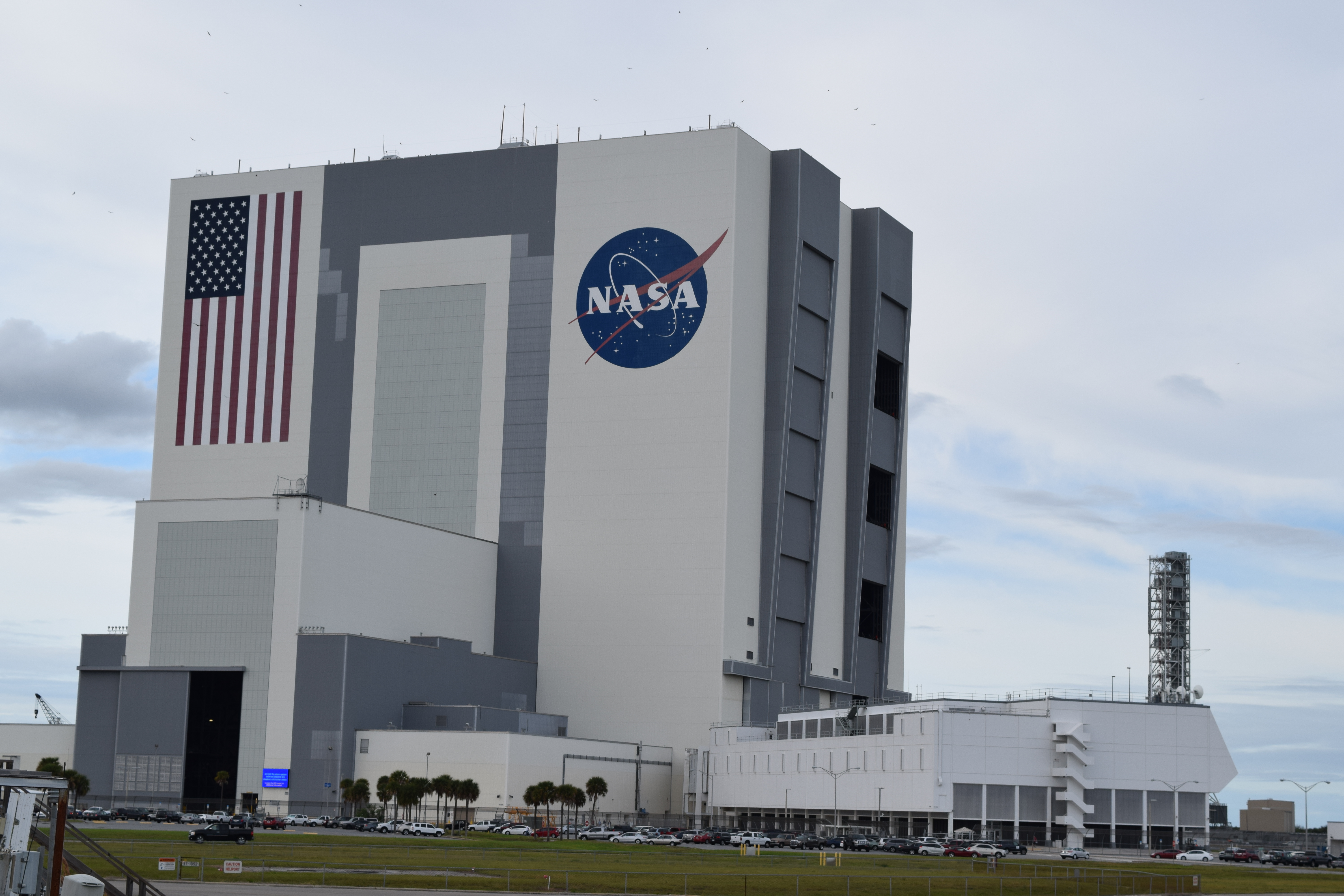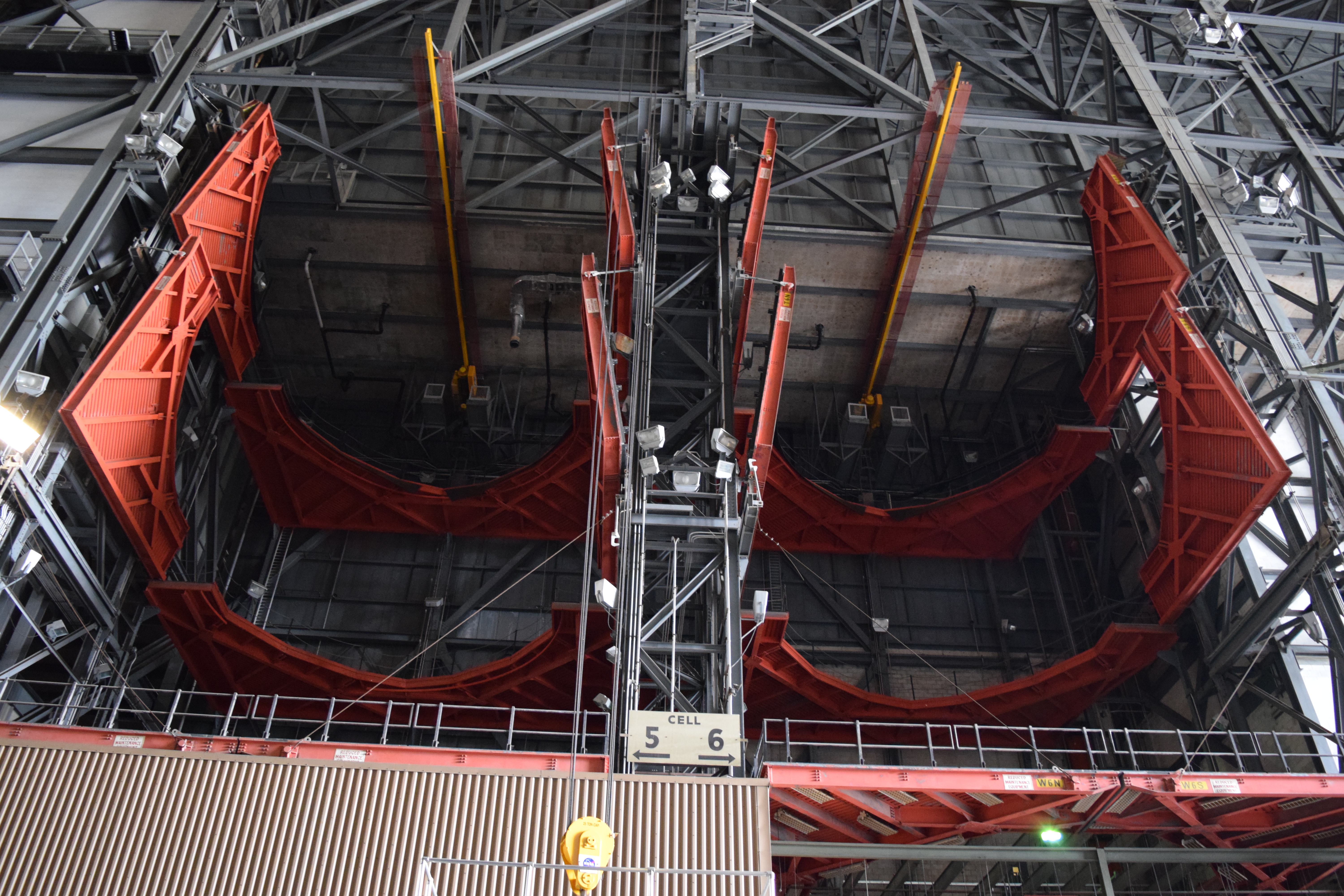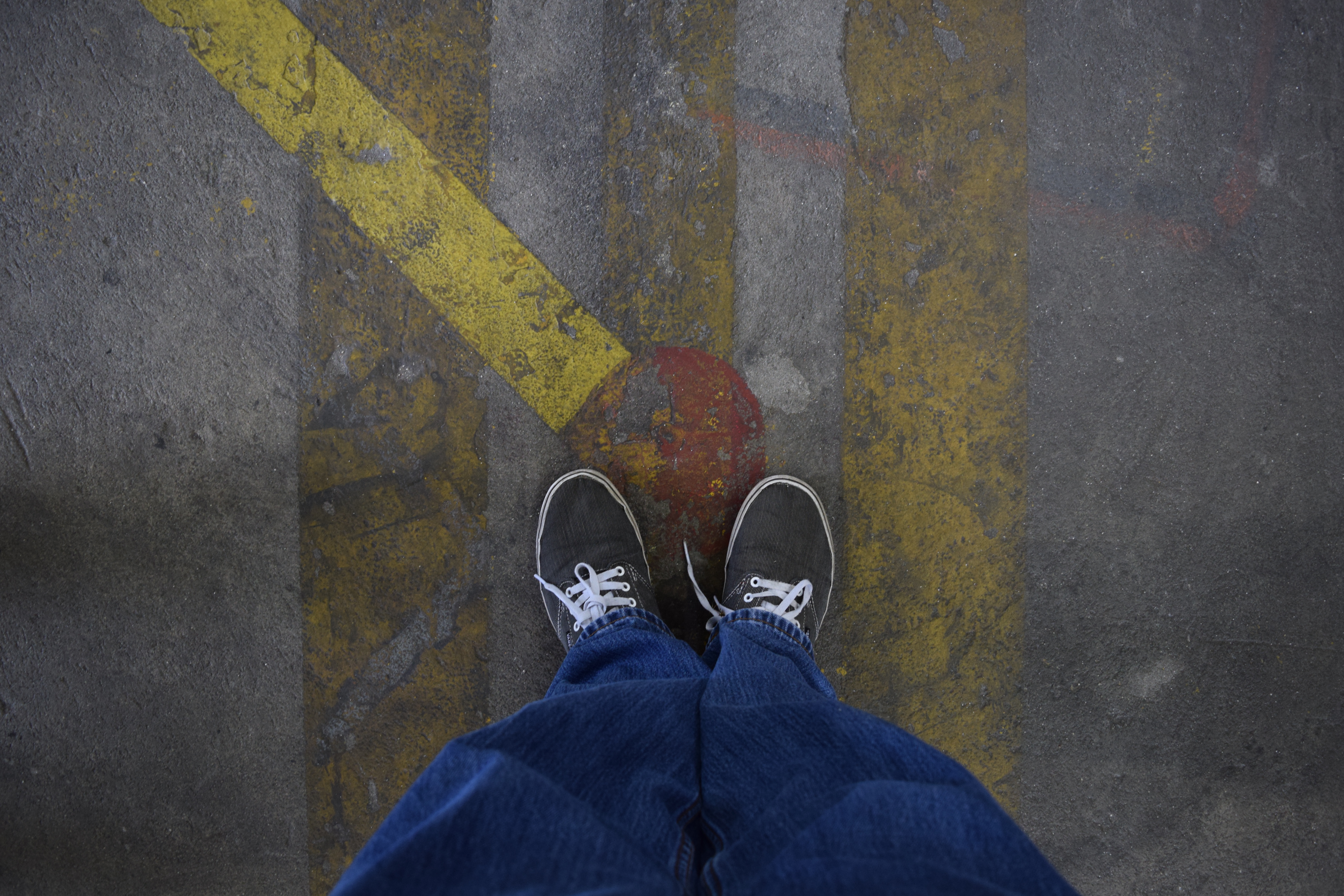NASA Social OA-4 Tours and Launch
February 12, 2018 in Personal12 minutes
In December 2015 I had the distinct honor to be selected to attend a NASA Social event that coincided with the OA-4 launch, an ISS resupply mission. NASA runs these events occasionally to give the world some insight into what goes on at various locations pertaining to the space industry. There’s a lot of really cool work going on, and I’m happy to finally have a chance to publish my experience on this amazing trip.
Before I get into it (though, this will become obvious as this post goes on), this was way behind the scenes. To say that this went beyond the visitor center doesn’t quite capture it. Not only did we go deep into the facilities - walking by engineers stations, striking up conversations, but we were even permitted into otherwise extremely restricted areas (even though many of these didn’t allow photographs, it was still very cool to see). Nearly everything I saw on this trip was very much not open to the general public. So I felt very privileged to have the opportunity to see what we did.
It should be re-emphasized that my trip was in 2015. I loved this trip and feel bad that its taken me this long to get my thoughts out there, but it's important to share my experience. Just note that all of the below is based off of information I gathered over two years ago. While I'm sure much of it is still accurate (the space industry involves a lot of very long-term planning), some of it may not be.
The NASA social team did a tremendous job of organizing this event. There was no aspect of this trip that was spent idle - every moment was focused on making my trip worthwhile. This was evident both in the number of places we were taken, but also in the fact that the social team clearly made an effort to insert folks from NASA, Boeing, OrbitalATK, and more into our group so that we didn’t have to wait for a formal “Q&A” to get questions answered - they were part of our group, so we just struck up conversations naturally. These weren’t just random babysitters either - these were engineers that were taking time out of their busy schedules of LITERALLY DOING ROCKET SCIENCE to hang out with a bus full of twitter profiles. Much respect.
Another kudo to the NASA social team for assembling such a diverse group of delegates. The group was about a 50/50 split between men/women, and really unique professional backgrounds. Some of us were just space admirers, others were interns at various companies in the space industry. It was great to get to know everyone and figure out what motivated them to get interested in space.
A few quick notes on this particular mission: OA-4 was a fairly standard International Space Station (ISS) resupply mission. The Cygnus spacecraft was built by OrbitalATK, and it was responsible for carrying supplies to the ISS. Cygnus was launched atop an Atlas V rocket which was built by United Launch Alliance (ULA), a joint venture between Boeing and Lockheed Martin.
Day One
I got up very early to catch the flight to Orlando. I grabbed the last chance to get a badge that day around noon, and hopped on a bus straight into KSC. The first stop was the media center. We hung out there discussing the plan for the next few days, while those that had already been there all morning had a chance to charge their devices. One gentleman that was with us that day worked on the shuttle, so had a lot of really cool answers to our questions. We spent about two hours there just chilling out, asking questions, etc.
The media center, by the way, was right next to the famous countdown clock.

We went from there to the area where the launchpads were being refurbished. One had been changed to the new format to support SLS:
The other one was still using the old shuttle format. This is obvious when you look at configuration of those exhaust holes in the pad itself - these show which configuration they’re meant to support. One big hole means it’s ready for SLS, since the two boosters are really close to the main engine. The below image, however, is still in the shuttle configuration:

You’ll see one large hole for the shuttle’s main engine cluster, and two smaller ones, offset forward and spread out, which are where the two solid-fuel boosters would exhaust.
The final stop on day one was the old Orbiter Processing Facility (OPF) buildings (used to prepare shuttles for their next missions) which are now Boeing facilities. There, they were working on their commercial crew initiatives. This is a NASA contract that will give the US human spaceflight capabilities again (since the shuttle program ended, we’ve had to rely on outside help from Russia to get our astronauts to/from the Station). SpaceX is the other company working on providing these capabilities as well with their Dragon2 capsule. Hopefully in a future NASA Social, I’ll get to see this too. :)
Yesterday, I was part of the first social media group to see the Boeing commercial crew capsule pic.twitter.com/5azn2unWVa
— Matt Oswalt (@Mierdin) December 2, 2015
This was a short day (for me anyways, since I was one of the last to get in), so I was grateful to call it a day around dinner time to get some rest so I could be ready for a full day of activities tomorrow.
Day Two
We started Day Two in the media center once again, but rather than chilling and waiting for phones to charge, we sat in the main media briefing center (where you typically find folks like Elon Musk giving post-flight debriefings). We heard presentations from all kinds of folks, mostly pertaining to the launch, all streamed live on NASA TV:
We had some great speakers, including folks from ULA (makes the rocket) and OrbitalATK (makes the Cygnus payload) to explain the mission, but a highlight for me was Director of Kennedy Space Center Robert Cabana. He’s a former astronaut, and spent time talking with us about all kinds of awesome stuff, including - oh yeah - what it’s like to be launched into space.

Another speaker explained some of what was actually going up in this resupply mission. One of these was a bunch of mini-satellites. These were really cool - able to fit in my hand, covered in little solar panels. I believe they were even powered by repurposed Android phones (or at least had equivalent computing power). Oh, and the antennas were literally made from metal measuring tape:

Once the morning briefing ended, we boarded a bus to head over to the NASA Vehicle Assembly Bulding (VAB). This was easily one of the top highlights of the trip for me. It is here that NASA assembles all of its launch vehicles, including the shuttles, as well as the Saturn V rocket for Apollo missions.

There are other, smaller VABs for some of the other companies like ULA, where the Atlas V was assembled.
This is an iconic building, and to say the very least…..it’s big. Like, really big. It holds the record for the largest single-story building in the world. It’s often the first thing seen by approaching ships that come in to the space coast. It’s very difficult/impossible to convey just how huge this building is via pictures. It’s so big, in fact, that it’s possible for clouds to form and even precipitate inside the building itself.

I am a big nerd when it comes to the Apollo program, so I had to take a picture of the circles on the ground where part of the Saturn V was placed during the assembly, as well as the old reinforcements used to hold it in place:


I also found the spot on the ground where the shuttle was positioned in order to be placed on its pad. The red dot I’m standing on is the center, and the yellow line indicates the awkward angle that the crone operator had to position the wings of the shuttle:

From the VAB we went to Swampworks. You can think of this as NASA’s own Skunkworks, but in the “swampy” everglades, thus the name. This was a VERY cool building, and where a lot of NASA’s really cool projects are being worked on. It was here where I really felt - “holy crap, they’re really letting us behind the scenes here”. Even the VAB is iconic enough where you feel like NASA might occasionally allow folks to tour at least the ground floor - but Swampworks was where I really felt they pulled the curtain and showed us where the real day-to-day work was being done.

So much of what I saw at Swampworks was aimed at creating foundational technologies for interplanetary travel. For instance, a trip to the moon is short enough to bring everything with you - but for longer trip, (say, to Mars) this isn’t practical. You simply need to be able to make the most of resources you find at the destination.
For instance - we saw experiments related to using regolith (fancy name for dirt) to create all kinds of things, ranging from heat shields all the way up to full-fledged habitats.



There was also this really cool experiment with conductive glass - they were able to run a current through the glass and immediately shed all of the dust on it. This is obviously very useful for just about anything deployed to a dusty planet like Mars:
From Swampworks, we went to the ASOC. This is an ITAR-controlled facility where the ULA launch control center was located. Due to the aforementioned regulations, we were not allowed to take pictures. However, we had a good conversation with the ULA folks, where they explained how their rocket is able to dynamically adjust the performance parameters of the rocket based on the time of launch. This gives them a 30 minute window to launch as opposed to a one-time go/no-go kind of thing. I believe SpaceX (and probably others) have similar capabilities on their platforms, but this was still really cool to hear explained.
From there, we went to the launch pad, where the rocket was already in position and seemingly ready to launch. We got crazy close to the rocket on this visit, and took tons of pictures.
Me in front of the Atlas rocket!!!!! pic.twitter.com/lRtPN2KPBe
— Matt Oswalt (@Mierdin) December 3, 2015
This was easily the closest I’ve been to an actual rocket, and got some really good close-up shots and video:

Day Three (Intended Launch Day)
The third day was a bit of a mixed schedule. We all received a free ticket to the KSC Visitor Center, and the “official” activities weren’t scheduled to start until 1:00PM, so I spent the morning at the visitor center. This was a little amusing to me, since I had already seen so much of the “behind the scenes” at KSC, and here I was going to the main tourist attraction there. Despite this, I still had a lot of fun, and if you haven’t had the chance to go, I highly recommend it. The exhibits dedicated to Challenger and Columbia is an extremely emotional experience and is worth the trip on their own.
At around 1PM we convened once again and went to a larger theatre-esque room where we heard from the (at the time) Deputy Director of NASA, Dava Newman. She spent a ton of time with us, answering questions. She was extremely eloquent, and clearly knew her stuff.
Listening to @DavaExplorer answer our questions. She is scary smart and very well spoken. #NASASocial pic.twitter.com/g5enXn1ZTl
— Matt Oswalt (@Mierdin) December 3, 2015
Another highlight was a visit to the Operations and Checkout Building, where several famous photos of astronauts getting on a bus to take them to their rocket have been taken. We couldn’t go inside this particular part of the building, but we did our best to replicate these photos:

We then went to the ISS prep area (I can’t remember if this is in the same building, or elsewhere to be honest). It is here where all of the ISS components were assembled and staged prior to being moved to their launch vehicles like the Shuttle. This building was also quite large. It even had useful markers to indicate how big the ISS was relative to the far wall in the building:


In addition, there were several payloads being prepped for future flights, and also some open exhibits, such as the folks behind the famous experiment where ISS astronauts grew their own lettuce:

Finally, from there we went to the causeway, where the bus pulled over so that we could see the launch. Unfortunately, as we were warned in the hours leading up to the launch, the weather was becoming increasingly hostile:
I am ready for this launch even if mother nature is not. #NASASocial pic.twitter.com/E79yfjHqIP
— Matt Oswalt (@Mierdin) December 3, 2015
As a result, I was not able to see the actual launch. I did get some really nice night shots of the rocket from afar, lit up beautifully by the lights at the pad:

On paper, this sounds like a huge disappointment. However, just because I didn’t get to see the launch (it was actually scrubbed for 2 more days after this), this trip was by no means a waste. The NASA Social team did warn us that this can happen, and that their goal was to make the trip about so much more than the launch itself. The launch was just the cherry on top - and while it would have been amazing to see the launch, seeing all of the work behind the scenes and talking to the hard working folks in the industry was beyond worth the trip for me.
Conclusion
I not only left with a lot of great anecdotes and pictures, but a renewed interest in the space industry. I’ve always admired it from afar, and had my own specific obsessions like the Apollo program, but this reminded me that there are a lot of smart people working hard to keep humanity pushing the space frontier. It’s easy to lose sight of this as we return to our day jobs, but it was nice to be reminded that there’s still work going on towards this goal.